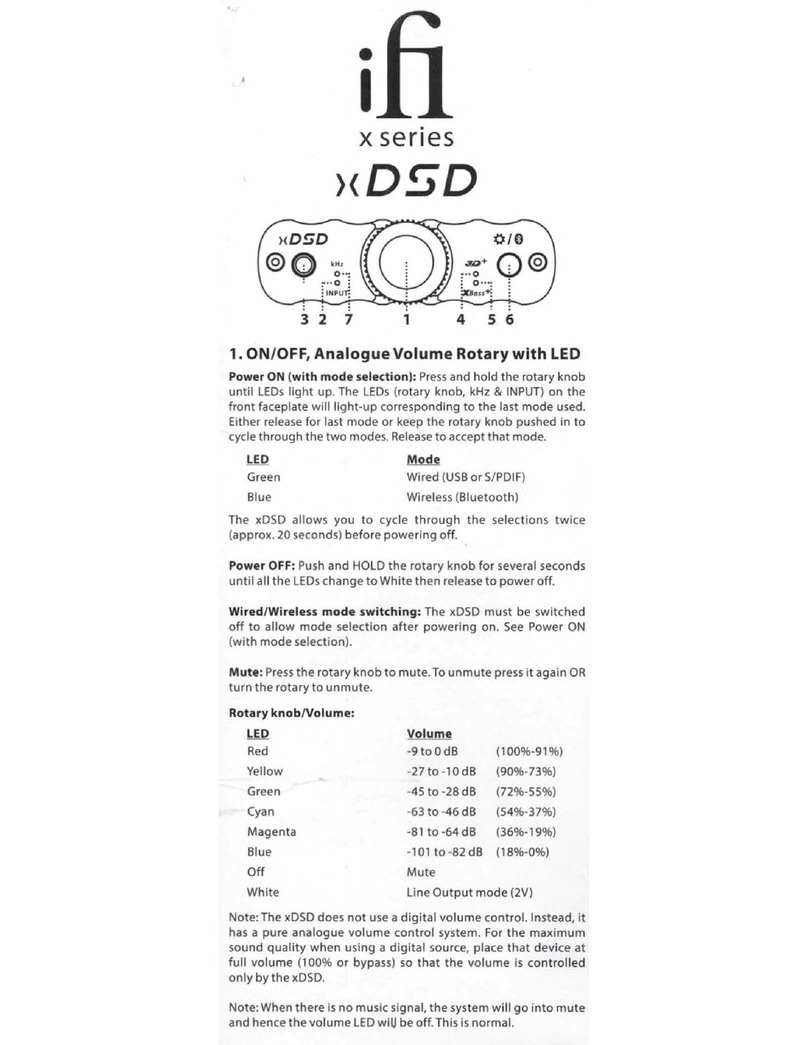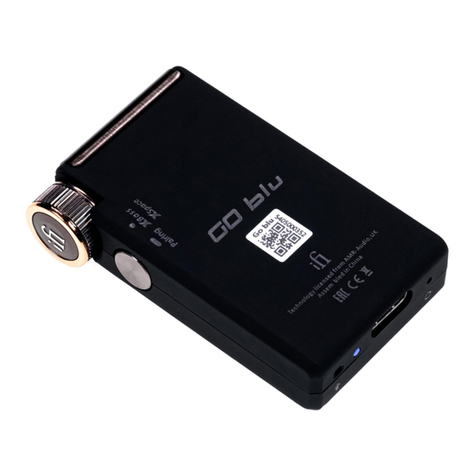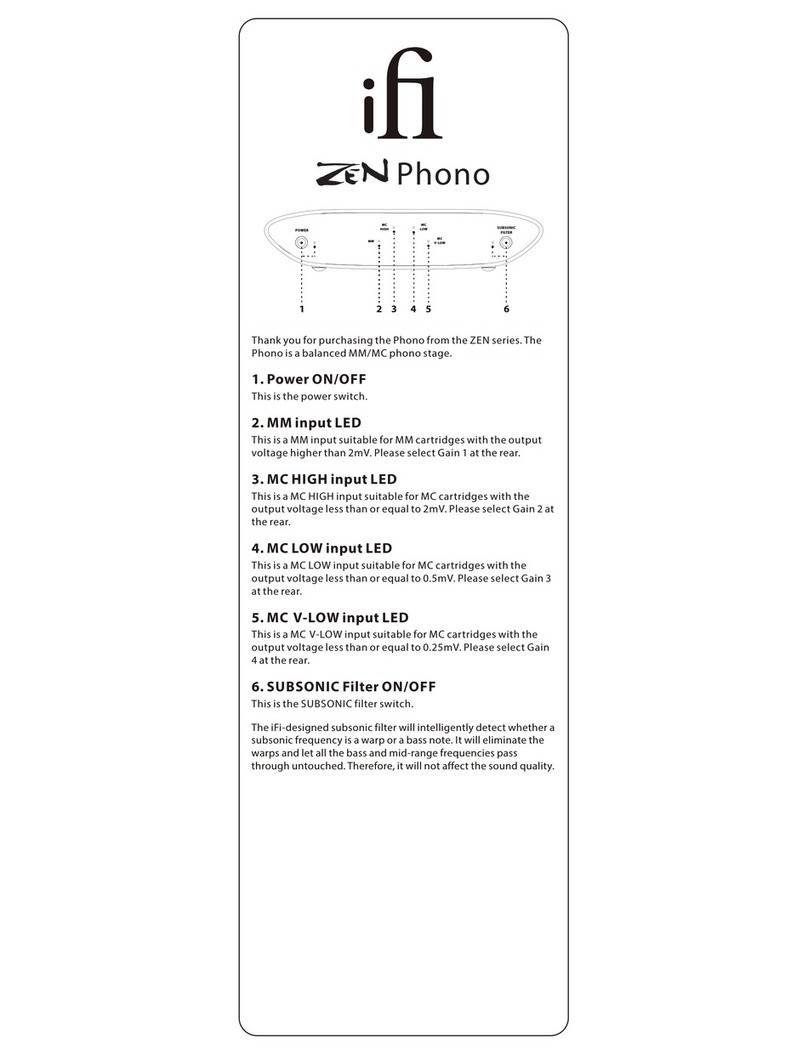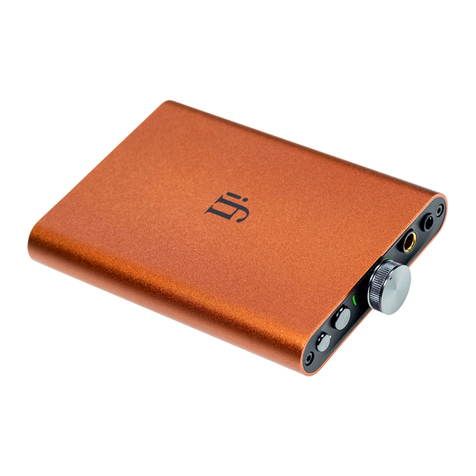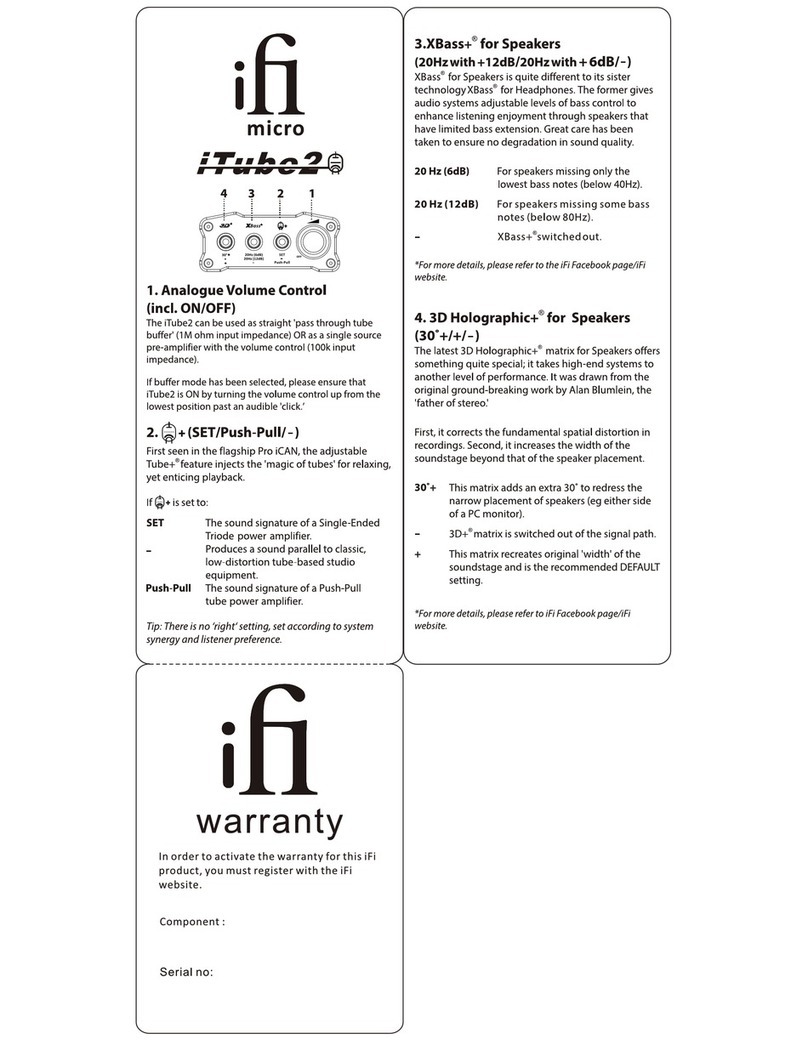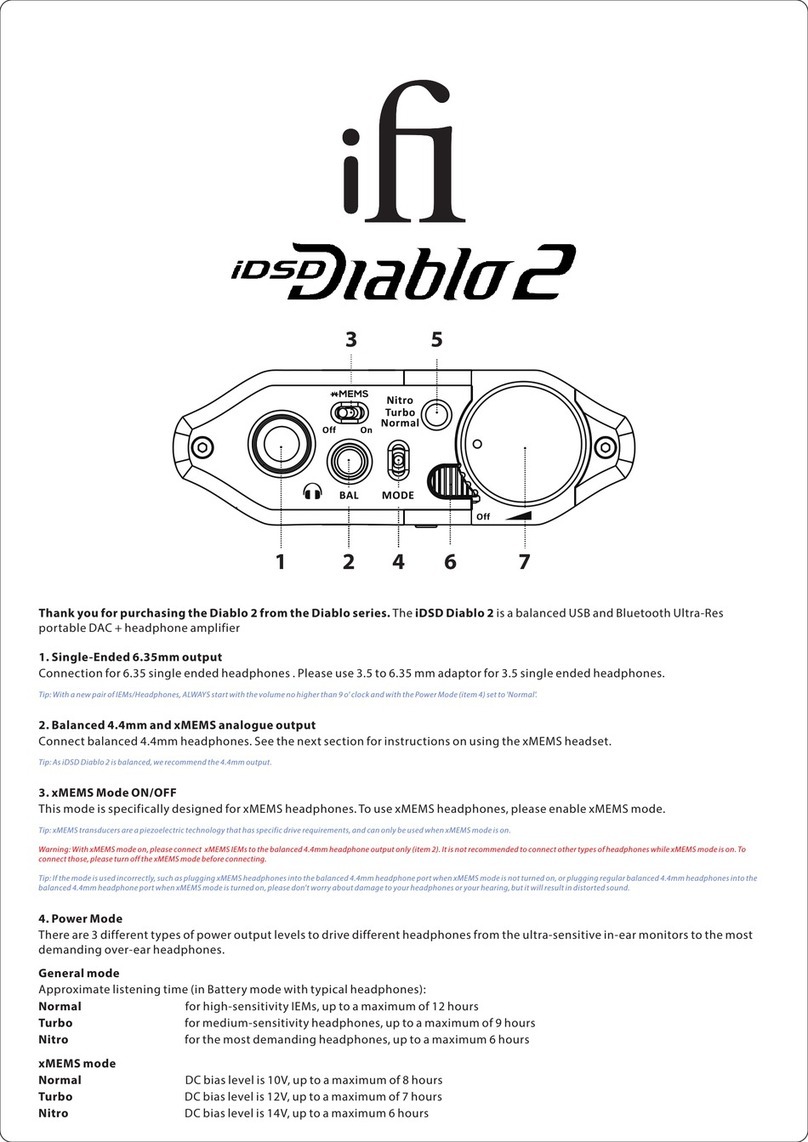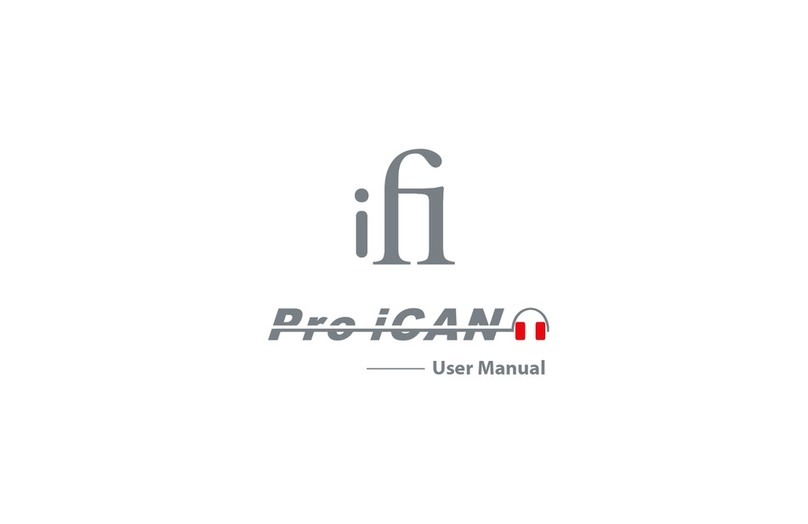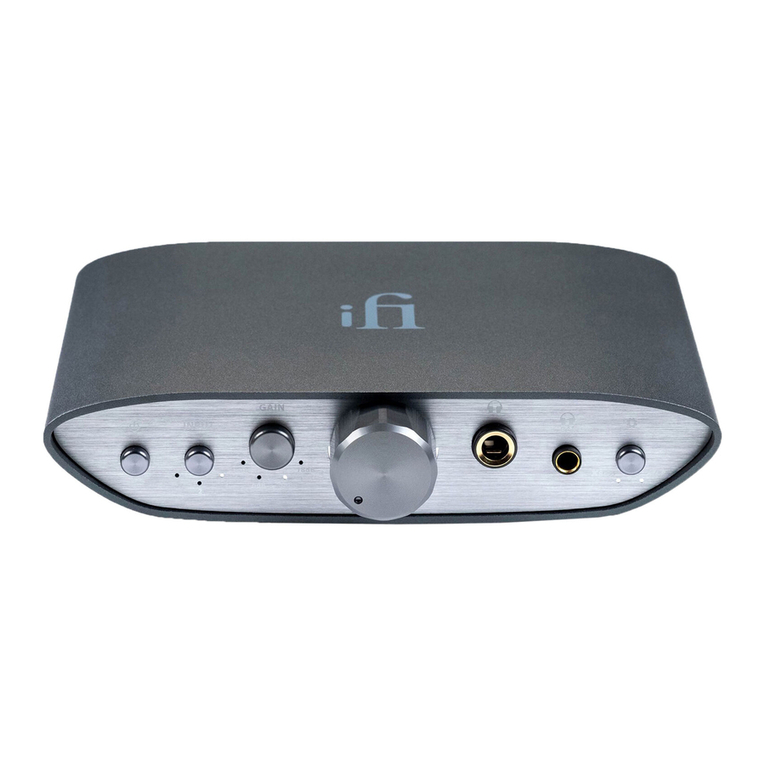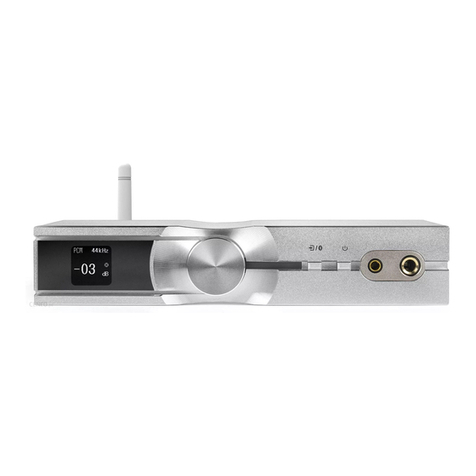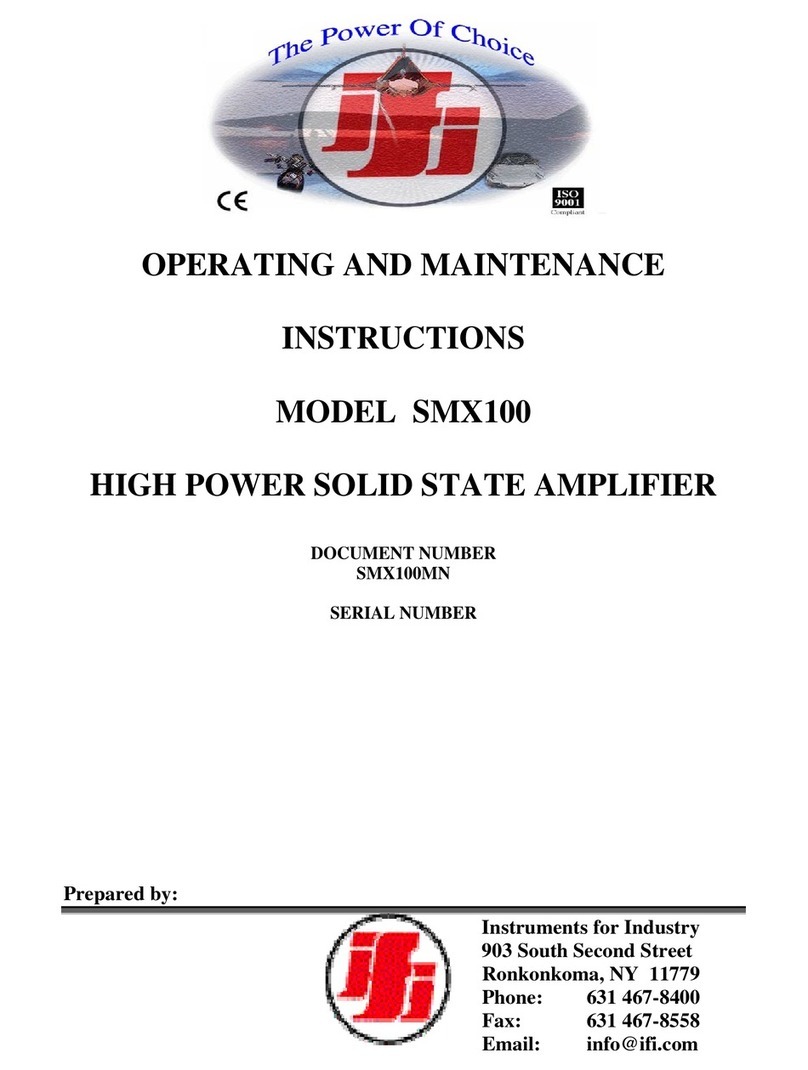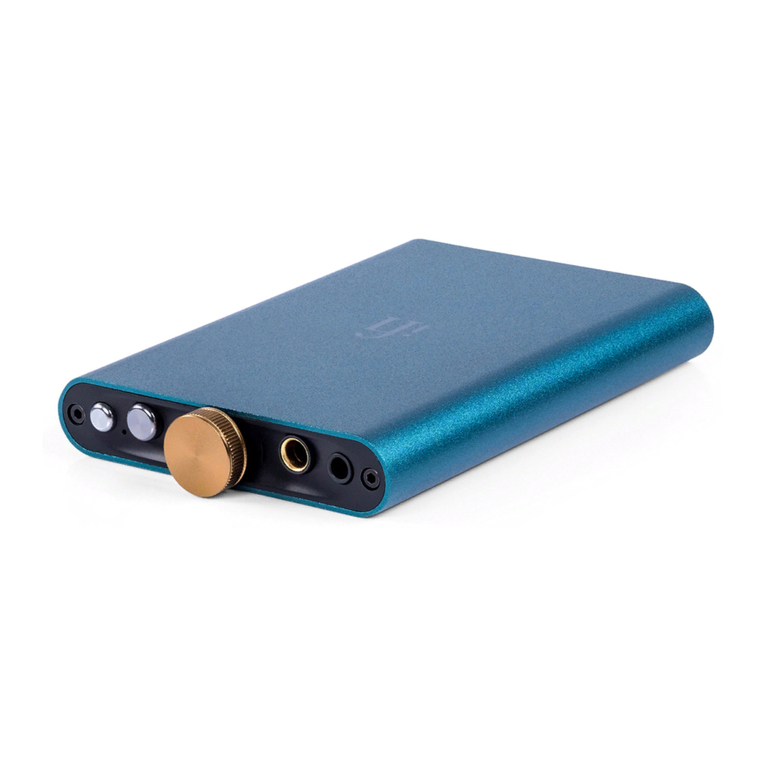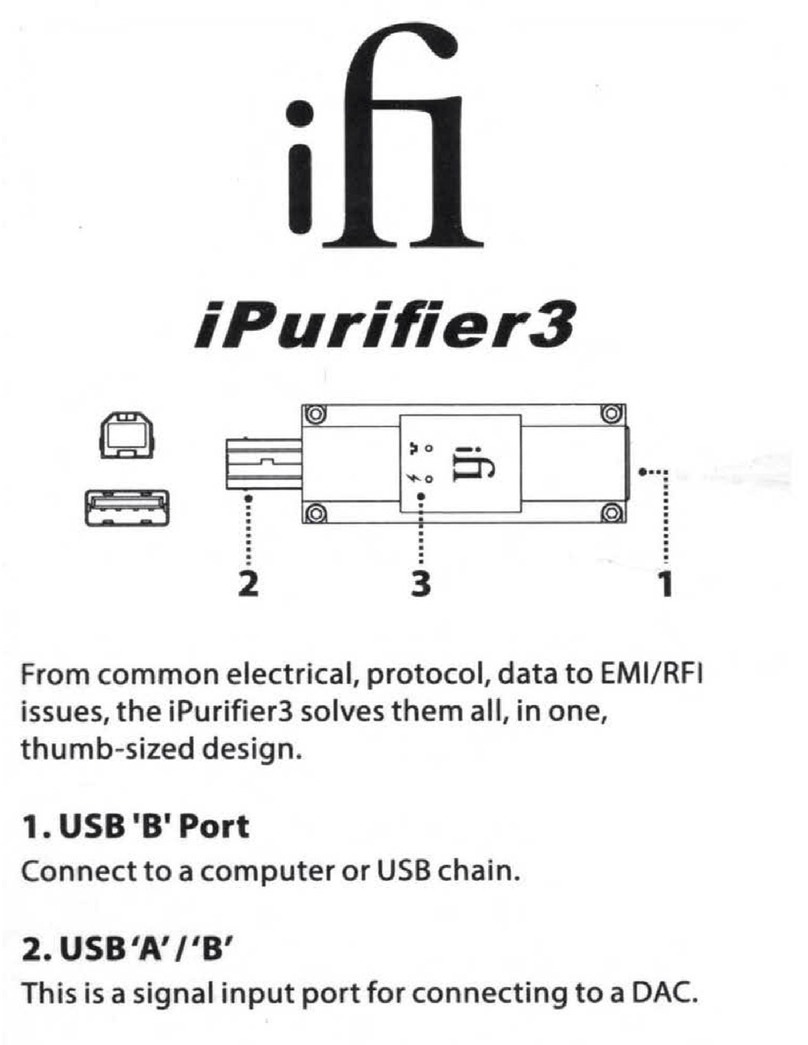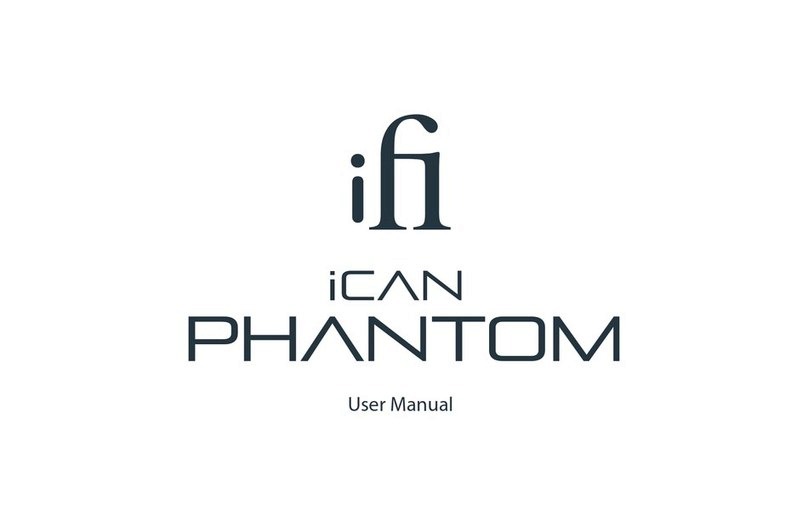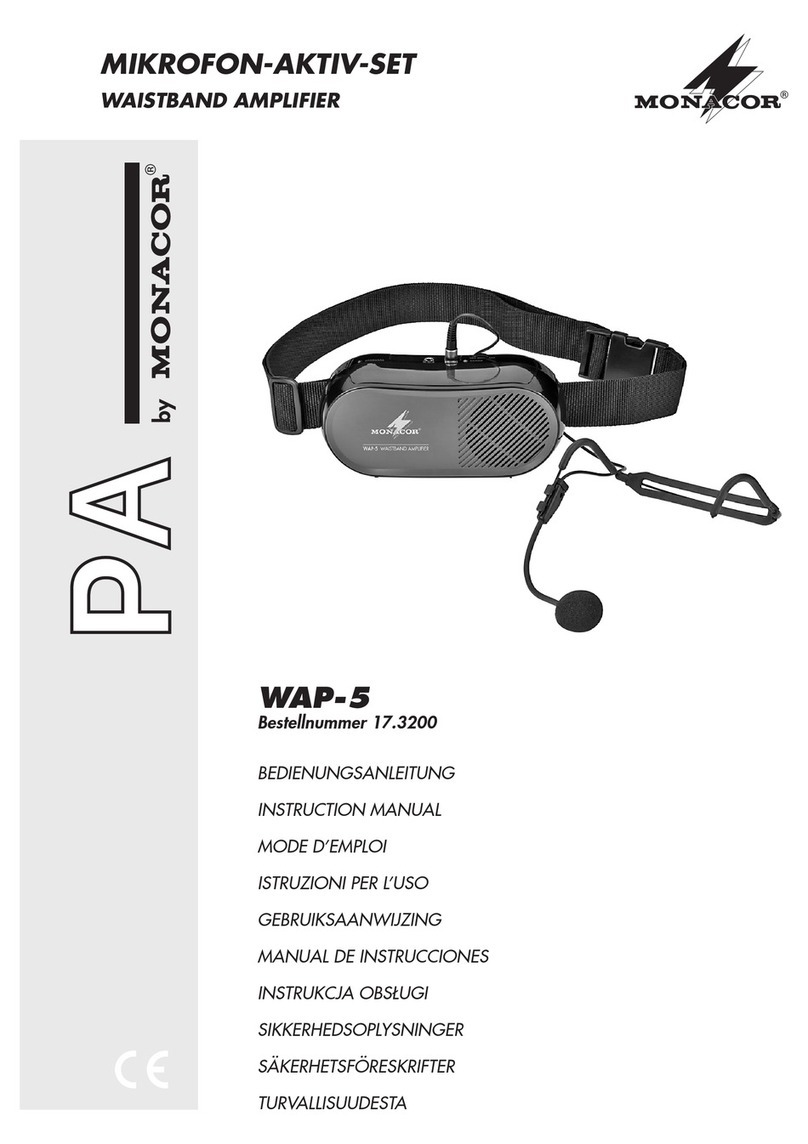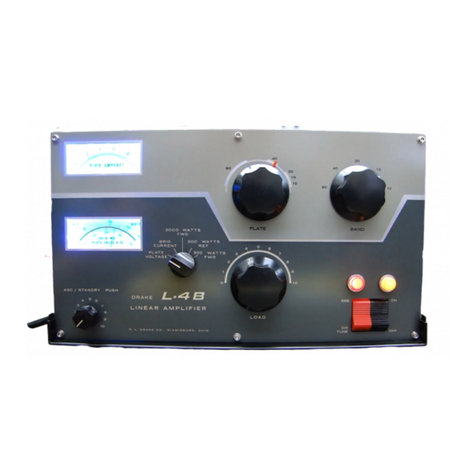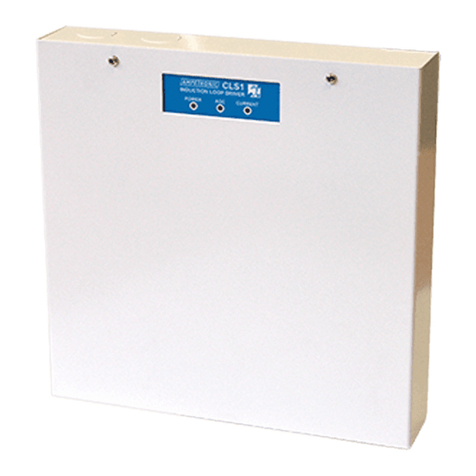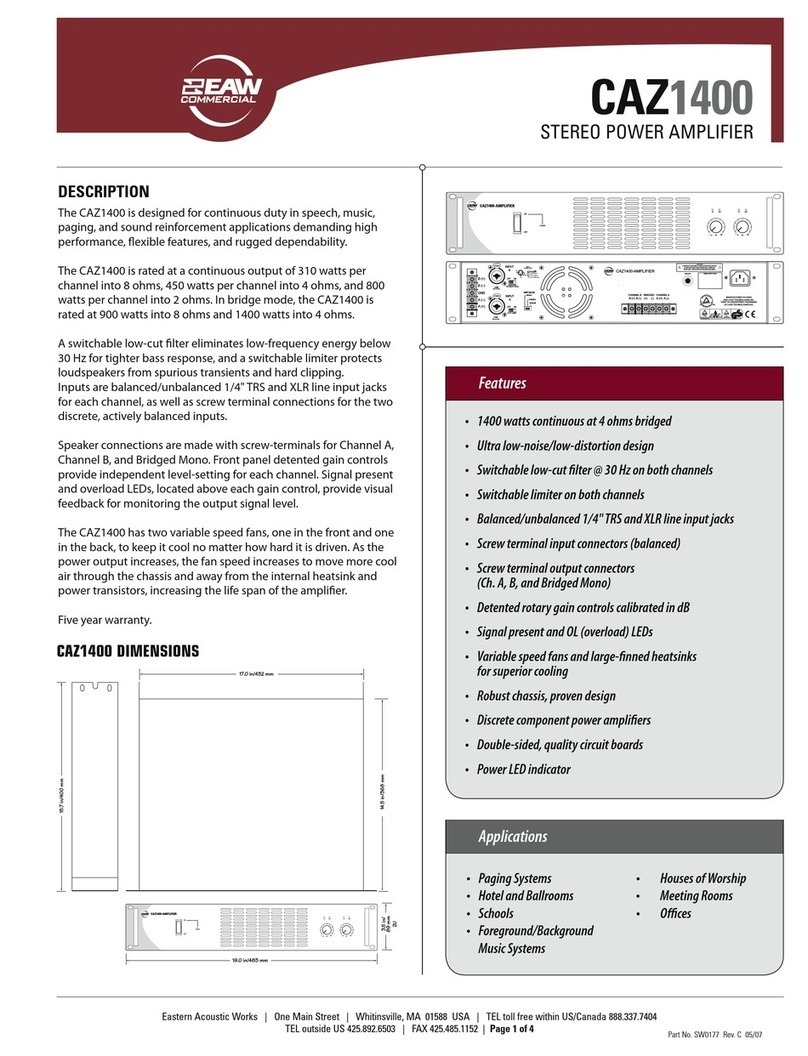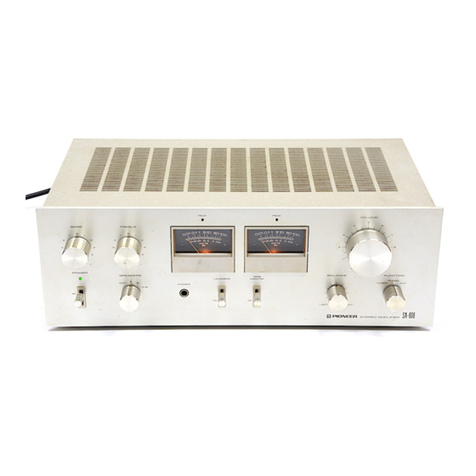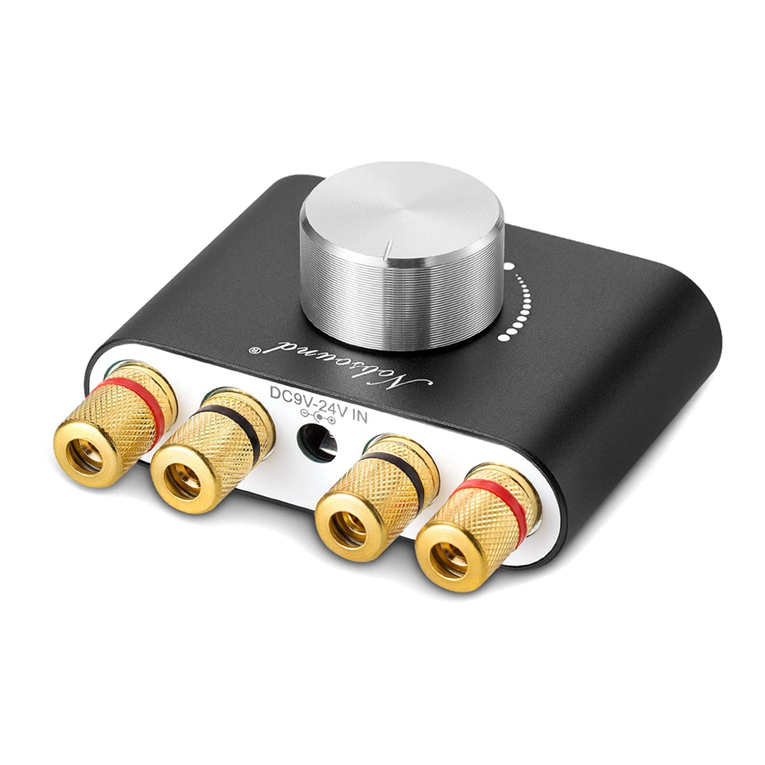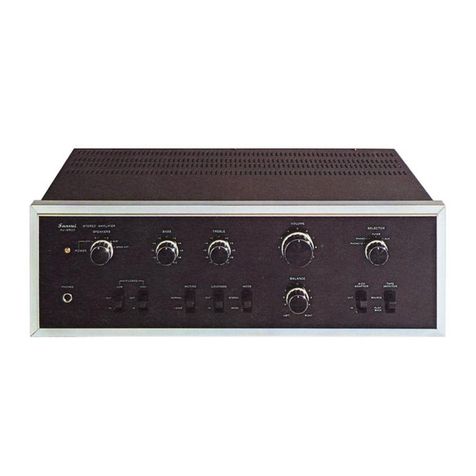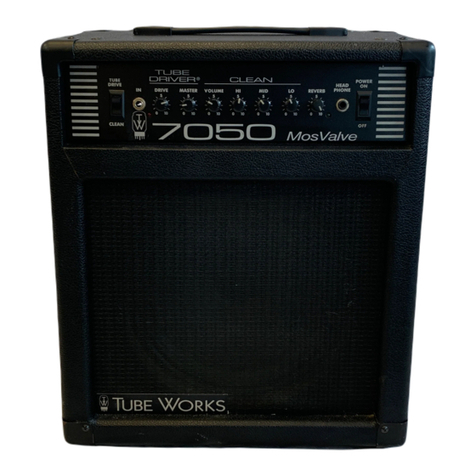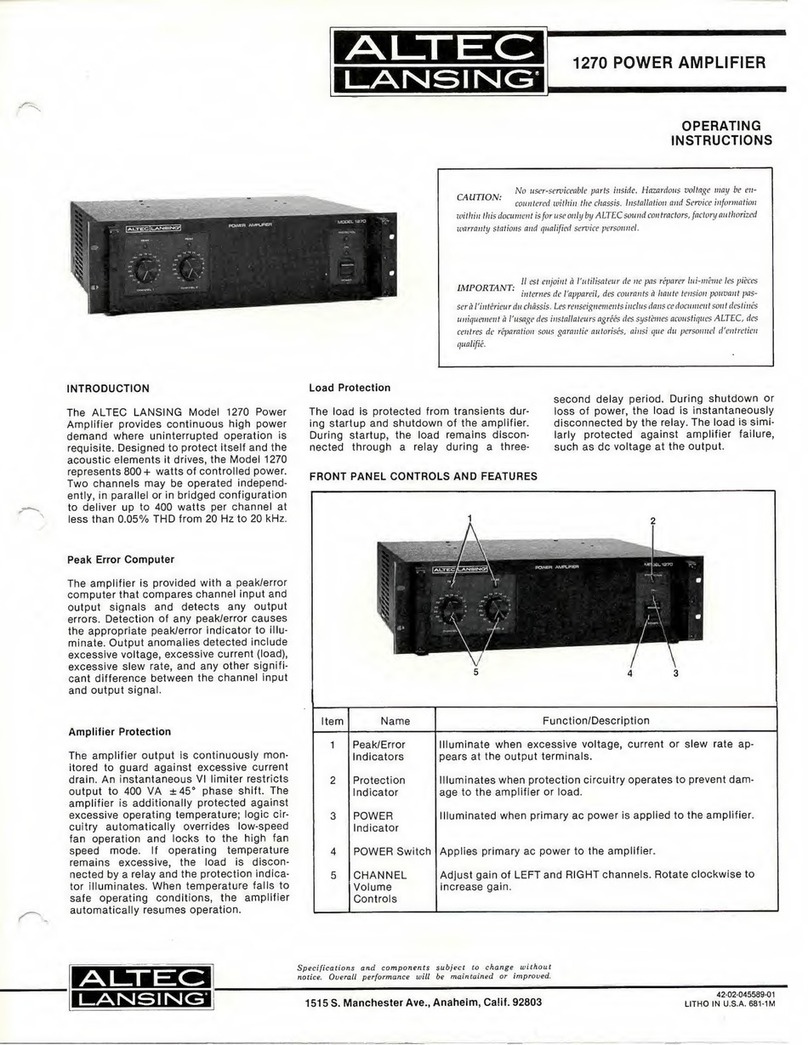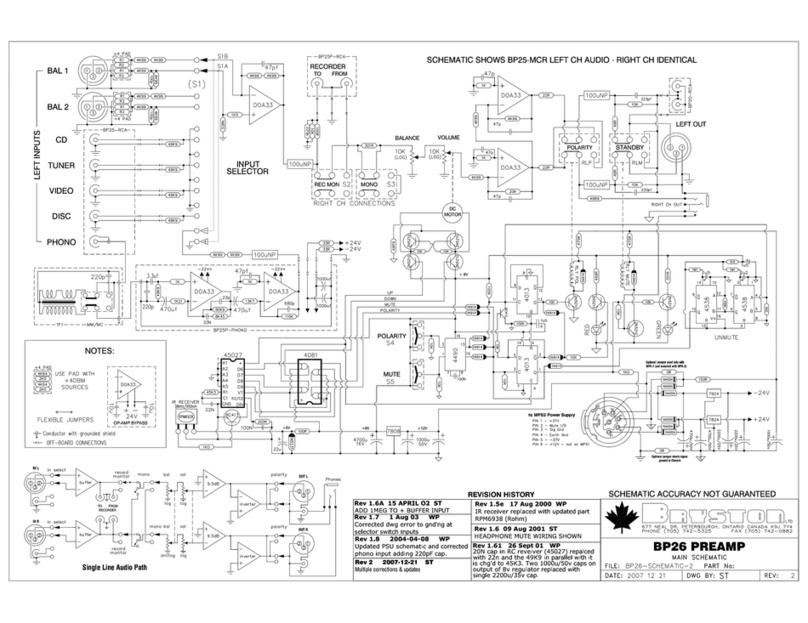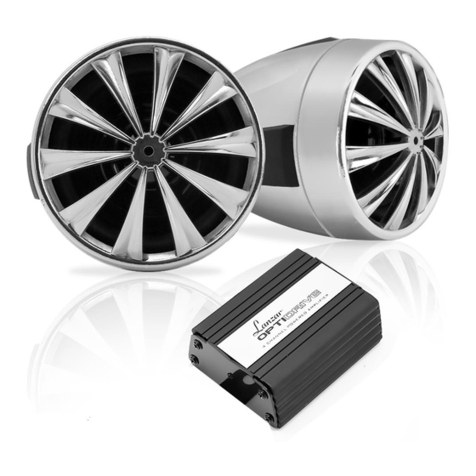ifi T251-500A Manual

Prepared by:
Instruments for Industry
903 South Second Street
Ronkonkoma, NY 11779
Phone 631 467-8400
Fax 631 467-8558
OPERATING AND MAINTENANCE
INSTRUCTIONS
MODEL T251-500A
HIGH POWER TWT AMPLIFIER
DOCUMENT NUMBER
T251-500A Rev.A
SERIAL NUMBER
Prepared for: Advanced Test Equipment S/O #
10401 Roselle St. P/O #
San Diego, CA 92121
Phone: 858-588-6500

Rev. A 10/01/08
2
TABLE OF CONTENTS
SECTION DESCRIPTION PAGE
1.0 INTRODUCTION ............................................................................................................................... 3
2.0 GENERAL DESCRIPTION................................................................................................................ 4
3.0 WARRANTY INFORMATION ....................................................................................................... 10
4.0 GENERAL INFORMATION
4.1 Scope Of This Manual......................................................................................................... 11
4.2 Operation Overview ............................................................................................................ 11
4.3 N/A
4.4 General Specifications......................................................................................................... 12
4.5 Functional Description ........................................................................................................ 12
4.6 Protection Circuits............................................................................................................... 13
4.7 Status Indicators, Controls and Connectors......................................................................... 13
4.8 Data Sheets ................................................................................................................. 16
5.0 PRINCIPLES OF OPERATION
5.1 Proper Usage And Warnings............................................................................................... 17
5.2 Features ................................................................................................................ 17
6.0 IEEE-488 INTERFACE OPTION
6.1 Introduction ......................................................................................................................... 18
6.2 Remote Initialization ........................................................................................................... 18
6.3 GPIB Address...................................................................................................................... 18
6.4 IEEE-488 Commands.......................................................................................................... 19
RS 232 ................................................................................................................. 21
7.0 MAINTENANCE AND SERVICING
7.1 Periodic Maintenance .......................................................................................................... 22
7.2 Servicing The Amplifier...................................................................................................... 22
7.3 Equipment Return Procedure............................................................................................... 23
LIST OF FIGURES
FIGURE DESCRIPTION PAGE
1.0 TWTA ILLUSTRATION ................................................................................................................... 3
2.0 FRONT DISPLAY PANEL START UP MENU ................................................................................ 5
3.0 FRONT DISPLAY PANEL GPIB ADDRESS MENU....................................................................... 6
4.0 FRONT DISPLAY PANEL OPERATE MENU................................................................................. 7
5.0 FRONT DISPLAY PANEL WARM UP TIME.................................................................................. 8
6.0 FRONT DISPLAY PANEL OPERATE MODE WITH RF POWER INDICATION ........................ 9
7.0 SYSTEM BLOCK DIAGRAM......................................................................................................... 11
8.0 REAR PANEL ILLUSTRATION..................................................................................................... 14
LIST OF APPENDICES
SECTION APPENDIX DESCRIPTION PAGE
8.0 A DATA SHEETS.................................................................................................... 24
9.0 B DRAWINGS ......................................................................................................... 25

Rev. A 10/01/08
3
SECTION 1.0
INTRODUCTION
Congratulations on the purchase of your new Wide Band Amplifier from Instruments For Industry,
Inc. Your new Wide Band Amplifier incorporates the finest advancements in the state of the art
electronics technology available in a compact, portable and versatile package. Your Wide Band
Amplifier's quality, performance and trouble free operation depends on you thoroughly reading
through this manual and familiarizing yourself with its proper operation and usage.
Your Wide Band Amplifier comes with the following accessories, be sure to check your packaging
for the items listed below before disposing of the packaging.
CONTENTS
( For a typical Wide Band Amplifier )
Quantity Description
1 TWT High Power Wide Band Amplifier, P/N T251-500A
1 Mating Connector, Power Line
1 Operation and Instruction Manual
1 Data Sheets (Included in Manual )
FIGURE 1.0
OUTLINE DRAWING

Rev. A 10/01/08
4
SECTION 2.0
GENERAL DESCRIPTION
The Instruments For Industry, Inc. ( IFI ) manufactured TWT Wide Band Amplifier is a Bench Top
or rack mount amplifier providing a nominal 500 Watts of RF power from 0.8 to 2.5GHz, with output
power of at least 500 Watts. The minimum saturated output power midband of the operating
frequency range is more than 500 Watts.
The Amplifier features an 8 Line Liquid Crystal Display ( LCD ) that displays continuous forward
and reflected power metering. The display also provide the operator with operating status and self
diagnostic fault indications.
The Amplifier incorporates protection circuits that monitors and controls so the amplifier cannot be
damaged by any mismatched load.
The Amplifier has an IEEE-488 BUS interface which allows the amplifier to be remotely controlled
through the use of a computer and a GPIB BUS.
To operate the Amplifier , connect a three phase power line ( 115 or 230 Vac line to line ), [or a
single phase as specified by the customer] to the Power line MS connector on the rear panel as
shown
Single Phase Connection.
PIN A - PHASE
PIN D – NEUTRAL
PIN E – GROUND
Three Phase Connection.
PIN A – PHASE A
PIN B – PHASE B
PIN C – PHASE C
PIN D – NEUTRAL
PIN E – GROUND

Rev. A 10/01/08
5
TWTA Controller Operation
A) Apply power to the unit using the front panel ON/OFF switch. Start.
Figure 2.0, Front Panel Display – Start-Up Menu
Start-Up Menu
When the circuit breaker or AC power on switch is energized, the above menu will be displayed after
the MPU booting cycle. This menu displays the company information, the amplifier model number
and serial number along with the firmware version used.
From this menu, by selecting the GPIB ADDR button a GPIB address can be set by the control knob
as seen in figure 2. After the address is set, press the RETURN key to return to the main menu.

Rev. A 10/01/08
6
Figure 3.0 Front Panel Display – GPIB address Menu
The Start-up menu will be replaced by Operate menu after about 5 seconds.

Rev. A 10/01/08
7
Figure 4.0 Operate Menu

Rev. A 10/01/08
8
Figure 5.0, Front Panel Showing Warmup time
1. Press the ON Key. The unit will display “FILAMENT WARMUP” and will start the
countdown as set per TWT used. At this mode the Filament, Collector and Grid (if applicable)
supplies will be energized.
2. After the time out, if no faults exist the STB mode will be displayed.

Rev. A 10/01/08
9
Figure 6.0 Front Display Panel Showing Operate Mode with RF Power Indication
1. Place the unit in Operate (OPR) mode. At this mode the TWT will be turned ON.
2. The display will show the Helix and Collector, Voltages and Currents as per TWT operating
data sheet (enclosed in the manual).

Rev. A 10/01/08
10
SECTION 3.0
WARRANTY INFORMATION
Instruments For Industry, Inc. (IFI) warrants each product of its manufacture to be free from any
defect in material and workmanship for a period of three years from shipment to the original
purchaser. All warranty returns, however, must first be authorized by our factory office
representative. Refer to the Service Section for information on how to return items for warranty
repair.
Warranty liability shall be limited to repair or replacement of, or part thereof, which proves to be
defective after inspection by IFI. This warranty shall not apply to any IFI product that has been
disassembled, modified, physically or electrically damaged or any product that has been subjected to
conditions exceeding the applicable specifications or ratings.
IFI shall not be liable for any direct or consequential injury, loss or damage incurred through the use,
or the inability to use, any IFI product.
IFI reserves the right to make design changes to any IFI product without incurring any obligation to
make the same changes to previously purchased units.
This warranty is the full extent of obligation and liability assumed by IFI with respect to any and all
IFI products. IFI neither makes, nor authorizes any person to make, any other guarantee or warranty
concerning IFI Products.

Rev. A 10/01/08
11
SECTION 4.0
GENERAL INFORMATION
4.1 SCOPE OF THIS MANUAL
This manual is intended to inform a qualified transmitter operator or technician of the normal
operating and maintenance procedures for the TWT Amplifier. It is not intended to be a course of
instruction for unqualified personnel.
4.2 OPERATION OVERVIEW
The Amplifier is designed to amplify a low level microwave signal and supply a high power CW
output. The Amplifier system function is accomplished primarily through the use of a Traveling
Wave Tube (TWT), control circuitry and power supplies, which can be controlled either locally or
remotely. The major subassemblies are mounted on two separated decks. The upper deck houses the
Collector supply, Filament supply, TWT, control circuitry and all the RF components. The lower
deck houses the Helix supply.
FIGURE 7.0
SYSTEM BLOCK DIAGRAM

Rev. A 10/01/08
12
4.4 GENERAL SPECIFICATIONS
The specifications listed below represent the minimum performance characteristics at the time of
delivery.
SPECIFICATIONS
Frequency Response 0.8 to 2.5 GHz (Functional)
Rated Power Output: 500 Watts minimum 1.0-2.5GHz
250-500 Watts nominal increasing from 0.8-1.0GHz
Power Gain: 57 dB, 1.0-2.5GHz
Input Impedance: Nominal 50 Ohms
Output Impedance: Nominal 50 Ohms
Input Signal Levels: < 0 dBm ( 1.0 mW ) See data sheet for specific input drive levels
Harmonics: -3dBc
Duty Factor: CW
Prime Power : 220 VAC, 50/60 Hz, Single Phase
Power Requirements: 10Amps ( less than 2.5 KVA )
4.5 Functional Description
The required voltages and currents to operate the TWT are provided by the Helix, Collector and
Filament supplies. The Helix supply provides the negative high voltage potential between TWT
Cathode and ground. The Collector supply provides the high voltage potential between the TWT
Cathode and Collector. The Filament supply provides the Heater voltage and floats at high voltage
Cathode potential. In some tubes a Grid element is used to switch the TWT beam ON and OFF.
The primary control circuitry and the service power supplies (+5V, +/-12V, + 24V) are energized
when the main circuit breaker is turned ON. Upon pressing the AMP ON switch, the Filament and the
Collector supplies are energized and a three minute warm up time is initiated. At the completion of
the three minute time out, the Amplifier then goes to STBY mode if no faults were detected. Upon
pressing the OPERATE switch the TWT is then turned ON.

Rev. A 10/01/08
13
4.6 PROTECTION CIRCUITS
The TWT Amplifier is designed with a variety of protection circuits to provide safeguards for the
amplifier should any adverse electrical conditions occur or if the amplifier accidentally experiences
operator deviation of the design application. Listed below are the safeguards.
4.6.1 Overheat Protection
The TWT, a critical component of this Amplifier, is mounted to a heat sink, which is in turn, air
cooled by high efficiency blower. Should an overheating condition occur, either through component
failure or by a restricted airflow, the Amplifier contains heat sensors that will shut down the system.
As a result, the air inlet and outlet openings should be free of obstructions for proper cooling of the
amplifier. Operation is restored by the Reset button when the amplifier cools to normal temperature
levels.
4.6.2 Power Supply Faults
The Power Supply Fault circuit monitors the Helix and Collector power supplies and produces a fault
indication should any voltage level deviate from normal operating parameters. Each power supply
voltage output is monitored and displayed. Should any power supply voltage deviate from the design
parameters, the Power Supply Fault Indication LED (RED), located on the front panel of the
Amplifier will illuminate and the related fault will be displayed on the LCD display located on the
front panel.
4.6.3 Mismatch Protection
The Amplifier is designed to operate with a tuned 50 Ohm load. Should any mismatching of the 50
Ohm load occur, the Reverse Power, also called Reflective Power, will increase, producing a high
VSWR. The Amplifier microprocessor monitors the Reverse Power levels by utilizing a Dual
Directional Coupler. When the Reflected Power exceeds 25% the Amplifier Output Power The
amplifier will go to STBY and the High VSWR message will be indicated on the LCD display. The
Reverse Power is also displayed on the LCD Display for operator monitoring for any mismatched
load.
4.7 STATUS INDICATORS, CONTROLS AND CONNECTORS
The Amplifier has various controls and status indicators which are identified below and can be
visually located on Figure 1.0, Outline Drawing and Figure 8.0, Rear Panel Illustration. A narrative
description for the function and purpose of each control and status indicator is provided within
paragraphs 4.7.1 and 4.7.2.

Rev. A 10/01/08
14
RF AMPLIFIER
Front Panel: Rear Panel:
POWER ON/OFF Ckt Bkr AC Source IEC Power Connector
Local/Remote Switch IEEE-488, Connector
Amp ON / OFF Switch RF Output, SC Female
RF Input, N Female
RF Sample, N Female
Operate / Standby Switch
Fault/Reset Switch
Control Knob
LCD Status Display
FIGURE 8.0
REAR PANEL ILLUSTRATION

Rev. A 10/01/08
15
4.7.1 FRONT PANEL STATUS INDICATORS
INDICATOR FUNCTION
Fault LED The Fault LED illuminates when either the Helix or the Collector
Power Supplies deviate from the design parameters. The Amplifier will
revert to AMP OFF mode. It also illuminates when either a Thermal or
Airflow condition occurs outside design parameters. Should an
excessive temperature condition occur while monitoring the TWT
temperature of the Heatsink, the Amplifier will revert to AMP OFF
mode. The LCD Display will indicate which fault had occurred.
Filament/Beam HOUR Elapsed time Indication on the LCD display, presents total hours that
the TWT Filament or Beam has been energized.
GPIB Remote The Remote Green LED indicates, when illuminated, that the amplifier
is in the remote control mode of operation via the IEEE-488 GBIP Bus.
The address selection can be done through the front panel using the
Control Knob. Follow instructions on the LCD display.
4.7.2 CONTROLS
CONTROL FUNCTION
Power ON / OFF Circuit Breaker to turn On/Off main prime power to the Amplifier.
Local The Local switch is a momentary switch. When depressed, the
amplifier is restored to the local control from the Remote mode of
control.
Amp ON/OFF The Power On/Off switch is a momentary switch which, when pressed
to ON position, Filament and Collector supplies are energized.
STBY / OPERATE Switch, when set to OPERATE mode it turns TWT Beam ON, when
set to STBY it turns TWT Beam OFF.
RESET Switch, when pressed resets Faults.

Rev. A 10/01/08
16
4.8 DATA SHEETS
Provided with each Amplifier are specific Test Data Sheets measured from the amplifier using a
calibrated 50 Ohm Pad to assist the operator in maximizing the performance of the Wide Band
Amplifier.
The accuracy of the Metering is ± .5 dB ( nominal ) so to provide the operator with the ability to
maximize the performance of the wide band amplifier.
The Test Data Sheets are located within Appendix A

Rev. A 10/01/08
17
SECTION 5.0
PRINCIPLES OF OPERATION
5.1 PROPER USAGE AND WARNINGS
5.1.1 Controlling Power Output
With a nominal 50 ohm resistive load and an input signal appropriate to produce a power output
within the limitations specified above, the amplifier may be placed in operation. To interrupt the
output, simply interrupt the input signal. The amplifier may be run indefinitely at rated output.
Output power is usually measured with a power meter and suitable power Termination.
5.1.2 Input Signal Levels
The Amplifier is designed to operate with less than a 0 dBm (1.0 mW) input signal. It is not
advisable to over drive any amplifier and depend on protection circuits to maintain proper gain
control. IFI makes available with each shipped amplifier specific data and curves so the operator will
know the proper input signal levels to more efficiently operate the amplifier, refer to Paragraph 4.7
herein.
7.2 Features
5.2.1 Preamplifier (Optional)
The Preamplifier provides the proper drive levels to the TWT to obtain the proper Output Power.
The preamplifier is powered from a low voltage power supply that is independent of the main power
supply.
5.2.1.2 Power Amplifier
The Power amplifier consists of TWT as the main amplification stage. It is powered by several
power supplies; Filament supply, Helix supply and Collector supply.

Rev. A 10/01/08
18
SECTION 6.0
IEEE-488.2 INTERFACE
6.1 INTRODUCTION
The Instruments For Industry, Inc. (IFI) Amplifiers can be operated remotely from a personal
computer having an IEEE-488 interface. This interface allows the amplifier to be remotely
controlled over the General Purpose Interface Bus (GPIB) by sending commands to the amplifier.
Additionally, amplifier status and forward and reverse power readings may be read over the GPIB.
All functions can be controlled by coded messages sent over the interface bus via the 24-pin socket
connector on the rear panel of the unit. IEEE-488.2 Standard is implemented, which defines the
protocols and syntax of commands. The GPIB command codes for the IFI Amplifier series are
discussed on subsequent pages and, for ease of identification; the command codes are identified
within the text by bold capital characters. For full information on the IEEE protocols and syntax the
IEEE-488.2 Standard should be consulted.
6.2 REMOTE INITIALIZATION
When the amplifier receives a command over the GPIB, it automatically switches to REMOTE
operation, pressing the LOCAL key on the front panel returns the unit to normal manual local
operation.
6.3 GPIB ADDRESS
The GPIB address of the amplifier is set by via the Front panel using the Control knob at the start up
menu.
NOTES ON USING NATIONAL INSTRUMENTS' GPIB CONTROLLERS:
In order for the amplifier to operate correctly with a National Instruments GPIB controller card, the
following must be done: (Items 1-5 are done in the IBCONF program.)
1. Set "Terminate reads on EOS" to yes.
2. Set "Set EOI with EOS on Writes" to yes.
3. Set the EOS byte to 0Ah (an ASCII line feed character).
4. Set "Send EOI at end of writes" to yes.
5. Set "Enable repeat addressing" to yes at the board level.
6. When sending command strings to the amplifier, a carriage return character (0Dh) followed by a
line feed character (0Ah), must always be appended to the command, otherwise the amplifier will
wait indefinitely for the CR-LF combination. If this happens the unit will have to be powered off
and back on to reset this condition. (The interface device will automatically assert the EOI line
during the LF if items 2 - 4, above, are set to yes in the IBCONF program.) As an example,
when issuing the zero attenuation command using the IBIC or WIBIC program, the command
string would look like this: "ZA\r\n". (The \r is National Instruments' notation for the carriage
return, and the \n is the line feed or 'new line' character.) Notice that the commands are upper
case only.

Rev. A 10/01/08
19
6.4 IEEE COMMANDS FOR TWTA
CODE TWTA FUNCTION
OFF AMP OFF
ON AMP ON
STBY Standby
OPRT Operate
RESET Fault Reset
ATTUxx Increase Attenuation (xx- # of steps) [Response with Attenuator
value](optional)
ATTDxx Decrease Attenuation (xx- # of steps) [Response with Attenuator
value](optional)
REQUEST STATUS
Code AMPLIFIER STATUS
STATUS OFF
ON
STANDBY
OPERATE
FAULT
REMOTE OPERATION DISABLED
INTERLOCK OPEN
EXCESS PULS W
EXCESS DTY CYC
FAULT RETURNS DETAILED MESSAGE
THERMAL FAULT
HIGH VSWR
HIGH HELIX CURRENT FAULT
HELIX VOLTAGE FAULT
COLLECTOR CURRENT FAULT
COLLECTOR VOLTAGE FAULT
LOW AIRFLOW FAULT

Rev. A 10/01/08
20
REQUEST AMPLIFIER STATUS
(POWER AND METERING)
CODE TWTA FUNCTION
POWERFWD Returns Forward Power Value
POWERRFL Returns Reflected Power Value
HELIXV Returns Helix Volts Value
HELIXI Returns Helix Current Value
COLLV Returns Collector Volts Value
COLLI Returns Collector Current Value
FILAMENTV Returns Filament Volts Value [ Optional ]
GRIDV Returns Grid Volts Value [ Optional ]
FILAMENTH Returns Filament Hours Value
BEAMH Returns Beam Hours Value
PULSEW Returns Pulse Width Value [ In Pulse unit only ]
FRQNCY Returns Pulse Frequency Value [ In Pulse unit only ]
DUTYCYC Returns Duty Cycle Value [ In Pulse unit only ]
*IDN? Returns ASCII response comprising of four data fields in the format
<Manufacturer>, <Model>, <Serial Number>, <Firmware Version>
*RST Reset Command, Sets the Amplifier to the factory default power up state
NOTES:
1. ALL GPIB COMMANDS AND REQUESTS MUST CONSIST ENTIRELY OF UPPER CASE
ALPHANUMERIC CHARACTERS.
2. WHEN SENDING COMMAND STRINGS TO THE AMPLIFIER, A CARRIAGE RETURN
CHARACTER (0Dh) FOLLOWED BY A LINE FEED CHARACTER (0Ah), MUST ALWAYS BE
APPENDED TO THE COMMAND, and OTHERWISE THE AMPLIFIER WILL WAIT
INDEFINITELY FOR THE CR-LF COMBINATION.
Table of contents
Other ifi Amplifier manuals

